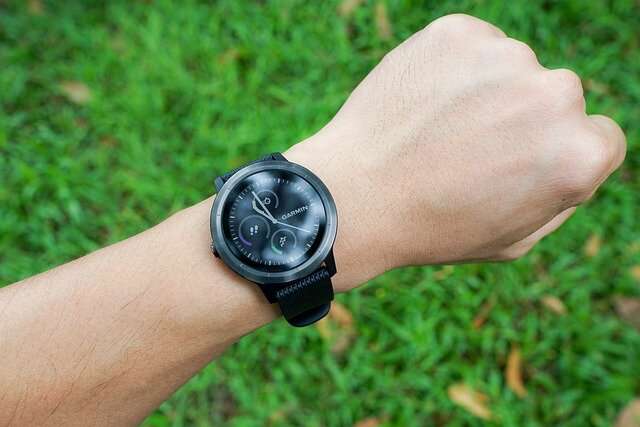This article has been reviewed according to Science X's editorial process and policies. Editors have highlighted the following attributes while ensuring the content's credibility:
fact-checked
proofread
Digital tools make physical exercise programs more effective and easier to stick with, find researchers

Physical exercise programs tend to be more effective and easier to stick with when they have been prescribed via mobile digital devices rather than in person or without technological support.
This is one of the conclusions of a meta-study that marks the first step of a thesis currently being developed by researcher Toni Caparrós as part of the Health and Psychology program at the Doctoral School of the UOC and supervised by Carme Carrion, principal investigator at the eHealth Lab group in the Faculty of Health Sciences and member of the eHealth Center.
Caparrós, holder of a Ph.D. in Physical Activity and Sports Sciences, seeks to examine new methods and procedures for improving the efficacy of physical activity programs to treat different conditions. The first research results, published in open access, involve a non-quantitative analysis of 13 studies from between 2011 and 2021 designed to examine the extent to which people's individual characteristics and conditions are taken into account when prescribing and carrying out physical activity programs.
The importance of physical activity in health
Everyone aged between 18 and 64 should carry out between 150 and 300 minutes of moderate (or between 75 and 150 minutes of intense) physical exercise per week. Those aged 65 and over should also complement this activity with exercises designed to enhance their quality of life and reduce risks of harm. These are the recommendations made by the World Health Organization (WHO), which also says that physical activity can help in the prevention and management of non-communicable diseases, such as cardiovascular conditions, cancer and diabetes.
The WHO defines physical activity as "any bodily movement produced by skeletal muscles that requires energy expenditure" The term therefore refers to "all movement including during leisure time, for transport to get to and from places, or as part of a person's work".
In other words, the WHO includes in this definition everything from walking and playing to intense sporting activities. So, this differentiates general physical activity from physical exercise, defined by the American College of Sports Medicine as planned, structured, and repetitive bodily movement done to improve or maintain one or more components of physical fitness.
For both physical activity and physical exercise, digital and mobile health (mHealth) tools are becoming increasingly common and are being heralded as a solution for improved management, evaluation and monitoring by medical professionals.
"Face-to-face sessions are effective and necessary, but the digital sphere also has its advantages. It helps encompass broader swaths of the population and reach those who, because they are geographically more remote or have difficulties in traveling, cannot access face-to-face treatments," said Caparrós. "If we can ensure that there is fluid communication using digital tools, these programs can end up being highly effective."
Toward higher quality, more individualized exercise
After drawing up an initial longlist of more than 400 works of research on the use of mobile technology in physical activity programs, UOC researchers ended up whittling the number down to 13 academic publications meeting the criteria they were seeking to assess. These are the principal conclusions of their analysis:
- Improved intervention efficacy. 70% of cases studies showed a significant improvement in the efficacy of physical activity treatments.
- Improved adherence. 85% of the studies analyzed concluded that treatment adherence (sticking with it) was greater when mHealth technologies were involved.
- A quantity-centered approach. When it came to studying the impact of these treatments, most research focused on the amount of exercise (e.g. the number of steps in a day) rather than the intensity or quality.
- Mobiles and apps, most frequently used. Although some treatments were provided through technologies like text messages or social networks, the most common support came in the form of mobile apps and smartphones.
- Scant individualization of treatments. Almost none of the studies analyzed reflected the adaptation of physical activity programs to take account of the patient's abilities, age or illness.
"Even though the sample analyzed is very small, the first noteworthy conclusion is that digtial-based physical exercise interventions are at least as effective as face-to-face ones," explained Caparrós. "But we've also seen how all these proposals use very generic variables and fail to provide quality information, as their designs are not tailored to the participants or their illnesses. Obviously, you can't interact with someone over 70 in the same way as you would with a young person with a completely different digital skillset."
This has led his research towards a new line of study, which will continue over the course of the work on the thesis, to improve the digital-health-based prescription of physical exercise to take account of patients' individual requirements (based on their illness and physical condition and prescribed in accordance with medical criteria) and their digital skillset. "Quantity-wise, it's easy to manage exercise online, but when it comes to quality and intensity, which are what really matter, no sufficiently in-depth analysis has been conducted," said Caparrós.
The study (in Spanish) is published in the journal Apunts Educación Física y Deportes.
More information: Toni Caparrós et al, Efectividad y adherencia a la actividad física y al ejercicio físico en las intervenciones mHealth: una revisión sistemática, Apunts Educación Física y Deportes (2022). DOI: 10.5672/apunts.2014-0983.es.(2023/1).151.01





















